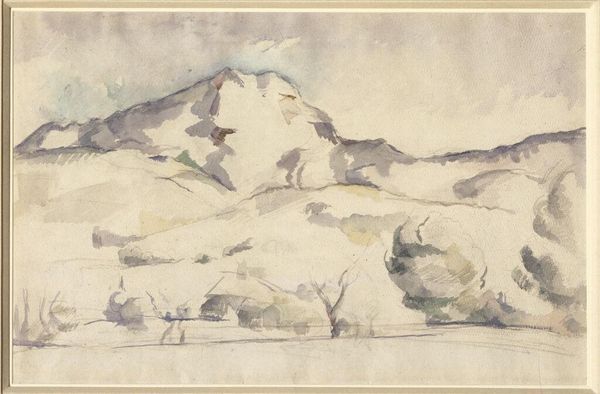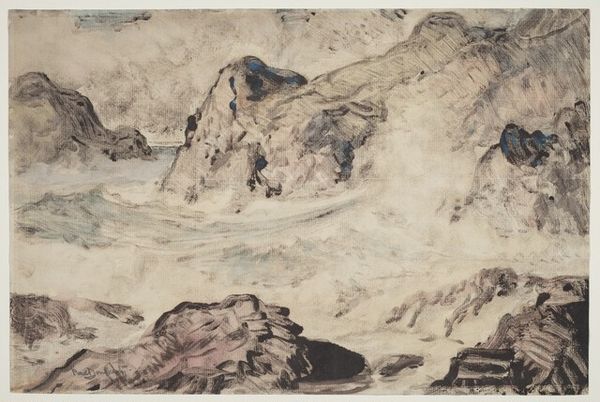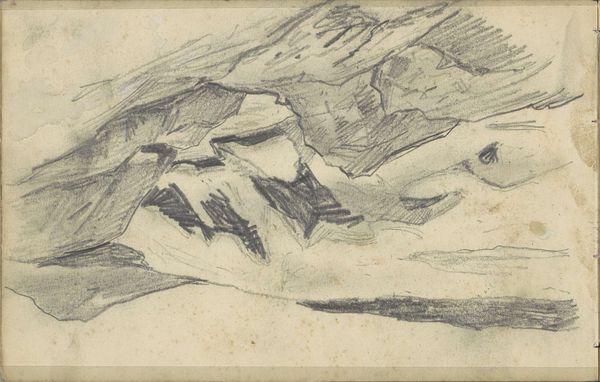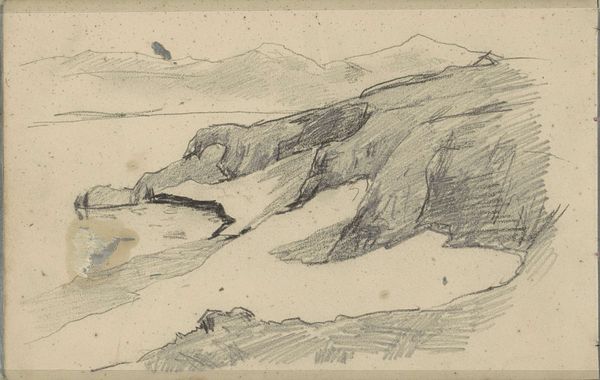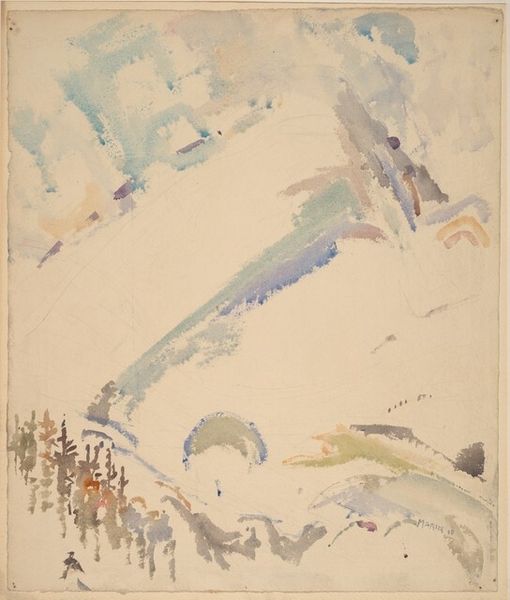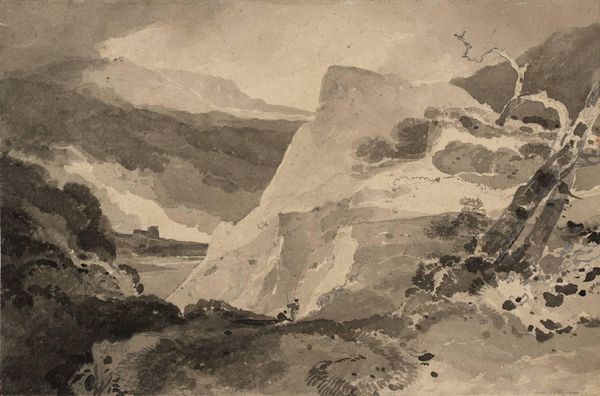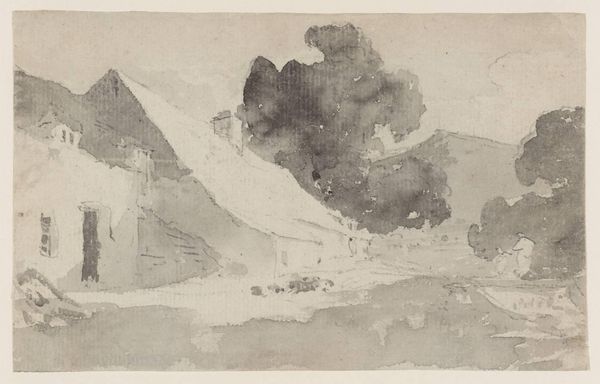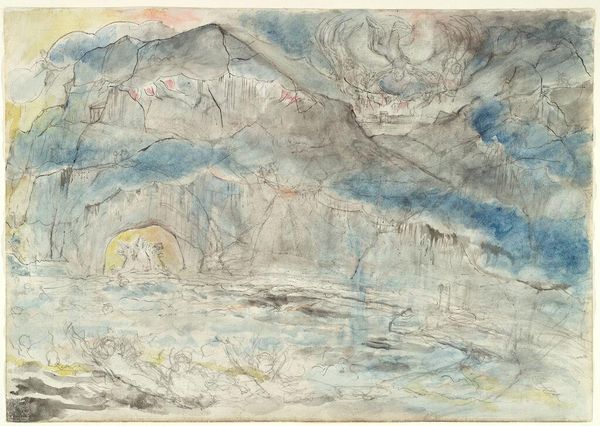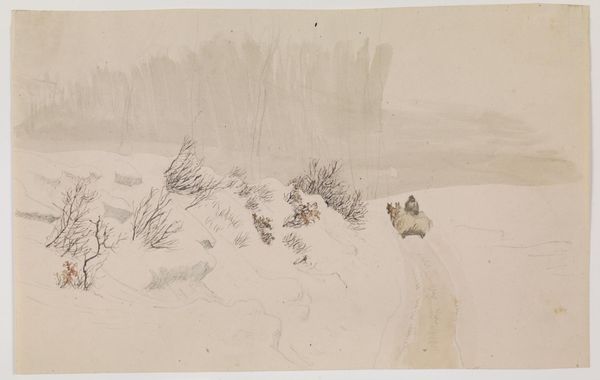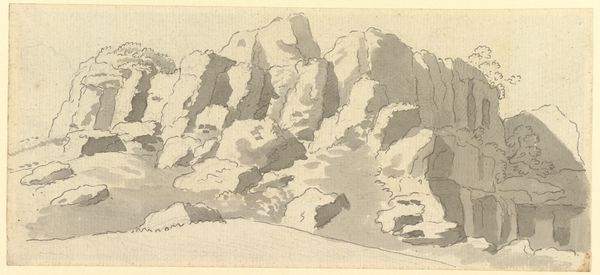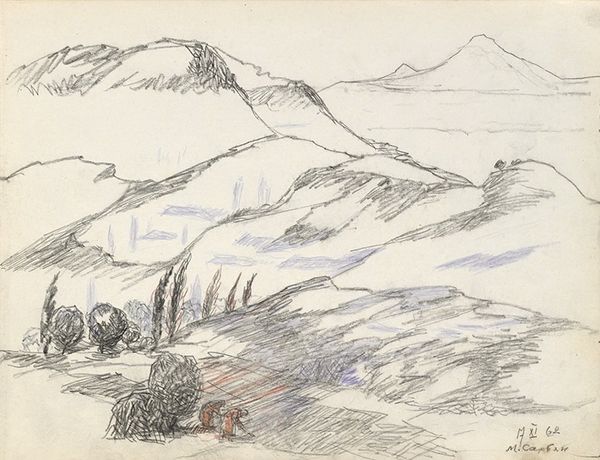
painting, fresco, watercolor
#
painting
#
landscape
#
fresco
#
watercolor
#
northern-renaissance
#
realism
Copyright: Public domain
Curator: What a tranquil scene. Dürer's "Landscape near Segonzano in the Valley Cembra," completed around 1495, offers a unique glimpse into the world through the eyes of a Northern Renaissance master. This work uses watercolor, perhaps even fresco. It demonstrates a move toward realism in landscape art. Editor: I immediately notice the almost spiritual stillness it evokes. The rolling hills seem to breathe quietly. The light is diffused, gentle. There’s a feeling of being in a sacred, untouched space, like stepping back in time and discovering hidden folk stories that dwell there. Curator: That "untouched" quality is intriguing, considering the social context. Dürer's landscapes marked a shift, granting everyday scenery artistic merit outside its role as mere background. These aren’t heroic biblical settings. This landscape celebrates secular beauty which has connections with the way landscapes would later be looked at through impressionism and post impressionism. The production and consumption of such imagery really did reflect societal tastes which sought new models for aesthetic delight, even from modest, regional geography. Editor: I agree. The almost rhythmic layering of mountains also is visually striking and it feels psychologically complex. Each slope possesses slightly varied values from a pale stone to a shadow-infused mossy green. It almost reminds me of Carl Jung's ideas about nature representing deeper layers of the self. This visual language can have some cultural connections; where a deep history of respecting the relationship between mankind and the soil were becoming lost amongst cities and society's ever-changing face. Curator: Fascinating. I see a reflection of the period’s humanist philosophy, which emphasized human experience and direct observation. Watercolor’s rapid drying properties and convenient use aided these on-location, or en plein air excursions. His ability to portray depth and detail while remaining in line with this new method created new perceptions of "reality" across the population and helped shape its societal appreciation of our natural world. Editor: Yes. It feels less like documentation, and more like an intuitive experience imbued with inherent wisdom and truth. The valley becomes less "a valley" and instead morphs into an inner-sanctum of peace and healing; something still incredibly valuable for us, today, considering the speed and pressures that many of us face in our digital realities. Curator: It really does stand as a testament to the evolving social relationship with nature and the power of landscape to evoke more than just geographic space. Dürer certainly helped shape a new visual vocabulary for our engagement with place. Editor: A deeply resonant reminder to consider that which quietly perseveres beneath the surface of our lives. It beckons and remains.
Comments
No comments
Be the first to comment and join the conversation on the ultimate creative platform.
